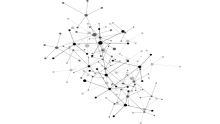On potential and performance
HiPo Week Read similar articles

Why are HiPos important to a business?
High potentials are very critical in the current environment where one wants consistent performance. We want winning teams and teams do not get created overnight – it requires people to come together, gel with each other and the high potentials to understand that it’s about team playing.
An example I’d like to share here is that identifying HiPos in my own HR team was very critical in a way that it forced me to think about my next step. So, I look at HiPo discussions as being a two-way street, where HiPos gain the opportunity to do something new but it also pushes leaders who have been snugly fit into their own roles to think about what is the next thing that they can do. When leaders start thinking about it, they begin affecting businesses, productivity and ultimately the organization gains out of it.
What makes HiPos unique, what are the traits that differentiate them?
Every organization has a framework of competencies and leadership traits they comply to, but when I think of HiPos, a few simple statements come to my mind. First is that, irrespective of the situations, management team and marketplace circumstances high potentials always have an attitude of ‘I can do it’ and ‘I will get it done’. Attitude is of more importance than capabilities and competencies.
The second thing is that HiPos are people who are looked upon as role models by the larger population. They are people who very seriously look at their jobs as team players or good leaders but also very consciously carry the responsibility of how they are perceived and how they can be role models to others.
How do you scale up a process for identifying and developing HiPos in a sustainable way such that it becomes a day-to-day activity for businesses?
I love the way the question ends by saying it becomes a day-to-day process and that’s the trick. I’ve been the HR Head for a while now and every time we tried a tool, forcing business to apply it, they hated and detested it. They are drawn between short-term gains like getting revenues and being profitable and in that rut, talks about creating a leadership pipeline completely goes in vain.
Weaving a few things into regular processes is what makes it scalable. What worked for us was ensuring that there is a rigor for mid-year or annual performance reviews. While analysing performances in the last quarter, month or given year, we also look at potential ratings for each of the employees, defining whether they are ready to take up the next role. This becomes a regular process, where within the reviews you slide in potential ratings and start a conversation regarding the next role a person can take up, how to retain him/her and what could be the risk of losing that person. So, making it a regular process makes it very comfortable for the business people as it’s very non-threatening and constructive and in a way quite proactive.
Putting high potential programs in place is like planting a tree. You don’t get the fruits immediately. You create the framework, nurture it and then you see the future leaders coming out. It’s a three to five years game, but if the discussions happen very well on a regular basis, I think it works pretty well and that’s how you make the process scalable, taking success stories back to the larger organization.
By using the performance reviews as a tool for identification and growth, how do you differentiate between performance and potential? How do you tackle a situation where the line manager himself/herself is not a high potential?
We’ve created some simple frameworks where we differentiate in the review process in terms of what have you delivered and how well have you delivered it. The ‘what P’ contributes to what is being done in terms of Performance and the ‘how P’ is about Potential and how well have you done it. We have three specific parameters – the three Ps, one is being Proactive, second is People leadership, which is about taking people along with you while you lead and the third is Principled behaviour, which implies how ethically have you delivered. The moment we start involving the softer aspects, it becomes easier to differentiate between potential and performance.
If the manager himself or herself is not a high potential then you go one level above in the pyramid and plan everything with the next senior person, while sharing transparent and genuine feedback with the manager about the gaps and why is he/she not seen as a high potential.
Have you seen more men being selected as high potentials in comparison to women? Do you feel the frameworks for high potential development need to be tweaked a bit to be offering equal opportunities for women?
Meritocracy is irrespective of gender. You perform, contribute, you have a potential and you show it. Whether its men or women, the difference comes out in how one leverages the framework they’re put through. The HiPo framework that we created ensures that the program helps them in networking, creating their own mentors in the system, showcasing their capabilities and women can sometimes lack the ability to leverage it to that extent.
Sometimes the mentor-mentee relationships that you create for high potentials, both men and women, don’t work effectively because there is a lack of the chemistry where you’re able to challenge each other’s point of view without being intimidated. If that needs to be changed then my recommendation to women would be to think beyond the box, be a little open and not necessarily rely on the formal mentor, instead go beyond and find their own mentors outside the boundaries.
I don’t think the framework needs to change but just a little tweak in the process is required and the way we leverage it as compared to men would make a big difference. The development needs could be different as there are subconscious biases, not just in the minds of men, but also in women just because of the way we have been conditioned. This is true across the globe and not just in India. So the development needs would be both for the manager and the employee to know those subconscious biases and as an organization you have to devise broader programs to address them both for men and women. You have to build that foundation so that whatever high potential programs you create on top of it actually work.
What’s your message to HiPos?
Have an open mind! Sometimes HiPos feel growth is only vertical and they feel satiated with the opportunities and not necessarily with the regular means of rewards. An opportunity does not always have to be vertical growth, it can also mean horizontal growth. HiPos who are aspiring to be leaders need to have a rounded experience across the franchise and not just in their own vertical. Think broad and holistic in terms of how can you contribute to the larger organization.







